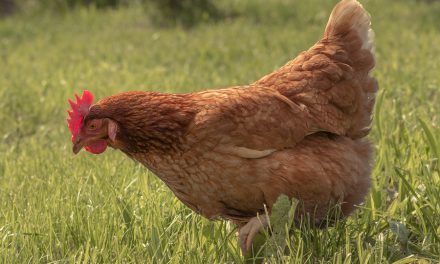Well done USDA. You’ve let your true colors show. You don’t work for the people or their protection but rather- big ag. Please read this article and make sure your friends and family do as well. The USDA is attempting to keep valuable information from us. We are going to need to make some noise on this one.
Last year the USDA spent time coordinating with both the EPA and FDA to test samples of corn syrup for glyphosate residues, beginning on April 1, 2017. Documents obtained through the Freedom of Information Act confirm that from January 2016 into January of this year, that was the plan. However suddenly this week, plans have changed; no glyphosate residue testing will be done- at all- by the USDA this year.
The original plan called for the “collection and testing of 315 samples of corn syrup from around the United States from April through August.” (Researchers were also supposed to test for the AMPA metabolite, which is what’s created as glyphosate breaks down.) Instead, the USDA will now sample and test honey because that sampling will cover over 100 different pesticides. But really, they just don’t want to see the results. The ivory tower is starting to crumble.
From the article:
“The USDA does not routinely test for glyphosate as it does for other pesticides used in food production. But that stance has made the USDA the subject of criticism as controversy over glyphosate safety has mounted in recent years. The discussions of testing this year come as U.S. and European regulators are wrestling with cancer concerns about the chemical, and as Monsanto, which has made billions of dollars from its glyphosate-based herbicides, is being sued by hundreds of people who claim exposures to Roundup caused them or their loved ones to suffer from non-Hodgkin lymphoma.”
RELATED ARTICLES:
- Shocking letter from dead EPA scientist reveals EPA bureaucrats being bribed by Monsanto to hide scientific evidence of glyphosate causing cancer
- US Congressman Calls for DOJ Investigation into EPA-Monsanto Glyphosate Collusion
- BREAKING: Robert Kennedy Jr., 40 California Residents SUE Monsanto, Saying Weed Killer Caused Cancer
Every year, the USDA and FDA are supposed to test thousands of food samples for pesticide residues to make sure that no unsafe levels of pesticides persist in food products commonly eaten by American families. “If they find residues above the “maximum residue level” (MRL) allowed for that pesticide and that food, the agencies are supposed to inform the EPA, and actions can be taken against the supplier.” However, despite the fact that glyphosate use has SPIKED in the last 20 years both the USDA and FDA have declined to test for glyphosate residues (besides the one time they did in 2011).
Now, the USDA doesn’t want American’s to think they don’t care, they are just being fiscally safe. You see, the party line is still that glyphosate is safe, so testing- which is expensive and inefficient- would be a waste of time. (You know who else says stuff like that? You guessed it, Monsanto.)
Again, the real issue is the USDA KNOWS what they are going to find. The FDA found it last year:
“The FDA began its own limited testing program for glyphosate residues ― what it called a ‘special assignment’― last year. But the effort was fraught with controversy and internal difficulties and the program was suspended last fall. Before the suspension, one agency chemist found alarming levels of glyphosate in many samples of U.S. honey, levels that were technically illegal because there have been no allowable levels established for honey by the EPA. That revelation caused angst in the beekeeping industry and at least one large honey company was sued by consumer organizations over the glyphosate contamination. The same chemist also found glyphosate levels in many samples of oatmeal, including infant oat cereal. The FDA did not publicize those findings, but they were revealed in internal records obtained through an FOIA request.”
And if their attempted cover up isn’t enough to infuriate you, let me introduce you to “CropLife America,” an industry organization who represents the likes of Monsanto and other big ag companies. In the past, CropLife has complained to the USDA that “data from its testing program is used by proponents of organic agriculture to promote organics over conventional foods.” (The gall- can you believe we dare to promote that?) They actually sent a letter to the USDA last year asking, “What can we do to assist you in fighting these scaremongering tactics?”
Something’s gotta give. We have to use our voices and demand the USDA do their due diligence. In 2015 when they did testing, they found that only 15 percent of the 10,187 samples tested were free from any detectable pesticide residues. In 2014, over 41 percent of samples were “clean.” That jump, in just a year’s time, is terrifying.
Share this. Call your legislators. Heck, call the USDA.
XO- Erin
Source: Huffington Post












